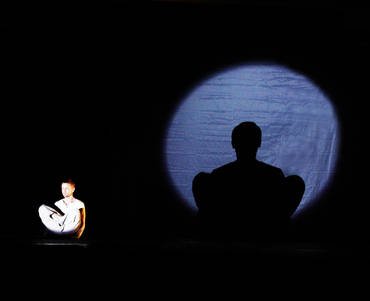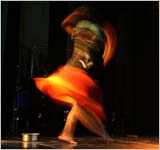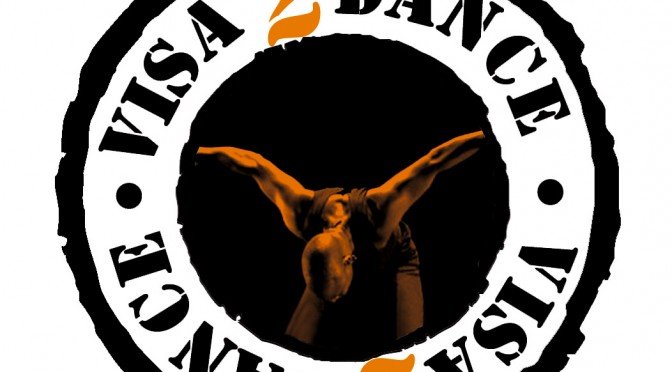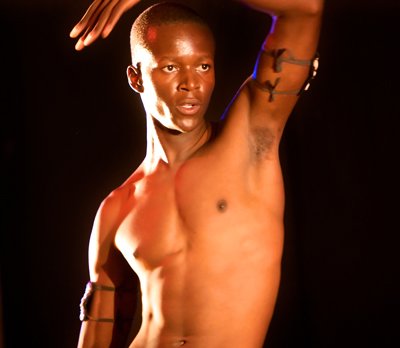Update: The Visa 2 Dance Contemporary Dance Festival is now known as Time 2 Dance.
Contemporary Dance: a style of dance that emerged in the 20th century. Defining this style is very difficult, as it is an extremely fluid and very nebulous style of dance.
One of the events I’ve most enjoyed attending in Dar es Salaam is, without a doubt, the Visa 2 Dance Contemporary Dance Festival.
If you live in Dar es Salaam and have never heard of Visa 2 Dance (like a friend recently told me despite his having lived in Dar es Salaam for the past thirteen years), then you are who I write this post for.
I won’t be roundabout; I’ll get right to it.
What Is the Visa 2 Dance Contemporary Dance Festival?
Visa 2 Dance is an annual, international contemporary dance festival that takes place every October in Dar es Salaam, Tanzania (though some editions have included activities in Zanzibar).
In the words of its organizers (taken from the Visa 2 Dance website):
The VISA 2 DANCE Festival focuses on contemporary dance and choreographic research. Contemporary dance provides an expressive and reflective platform for people to examine their inner identities. They discover their sense of place, beliefs, relationships, and aspirations. Art in general, and performing arts in particular, can be excellent drivers of development.
READ ALSO: Thriving and Surviving After Divorce
From what I can tell from the 3rd and 4th editions of the festival, Visa 2 Dance consists not only of several nights of contemporary dance performance, but also a visual art exhibition, dance and technical—i.e., stage, light, and costume design—workshops, forums, and discussions.
Visa 2 Dance is not only about entertainment but also about developing skills and promoting the arts, with a strong emphasis on cross-cultural exchange.
If you are anything like me, you might be wondering:
What Exactly Is Contemporary Dance?
I asked this question of some Visa 2 Dance performers after spending several evenings enthralled by what I’d seen the first time I attended the festival.
I am not sure I completely grasped their explanations, but according to WiseGeek.com:
Contemporary dance is a style of dance which emerged…as an outgrowth of modern dance and other 20th century dance techniques. Defining this style of dance can be difficult, as contemporary dance is an extremely fluid and very nebulous style of dance. Unlike traditions such as ballet, contemporary dance is not associated with specific dance techniques, but rather with a dance philosophy. In contemporary dance, people attempt to explore the natural energy and emotions of their bodies to produce dances which are often very personal.
Contemporary dancers can come from any training background, ranging from classical ballet to breakdancing…Contemporary dance places a heavy emphasis on the connection between mind and body, with dancers being encouraged to explore their emotions through dances which push against traditional boundaries. This style of dance often involves a great deal of playing with balance, floorwork, fall and recovery, and improvisation.
So What Did I Enjoy so Much about Visa 2 Dance?
To answer that question, let me start by saying that I knew very little about Visa 2 Dance when I first attended a show.
I was invited to the show by a friend, whose invitation I accepted more so that we could hang out than for any other reason.
By the end of the first few performances, I knew I’d be back the following night.
Not only were the performances beautiful, they were also full of meaning, leaving me astonished by how much could be communicated through simple (silent) body movements.
From the 3rd edition, for example, I greatly enjoyed “Scars of Innocence”, a dance about female circumcision, performed by an all-male cast of dancers from the Ugandan Keiga Dance Company that had me flinching in pain, at one point, so good was their depiction of the pain of circumcision.
I also recall the performance by the Ethiopian Adugna Dance Theatre, which included several disabled dancers performing feats of strength, such as lifting a chair with a crutch above the heads of fellow dancers, serving as a clear reminder that “disability is not inability”, a phrase repeated often in conjunction with that performance.
From the 4th edition, I enjoyed the fast-moving Visa 2 Dance production, “Goud” (‘Gold’ in Dutch), in which gold served as a metaphor for talent—the dance being about “the responsibility that every one has to take in nurturing and expressing his own talent…[while]…also…allowing…others to cultivate their own”.
I was intrigued, too, by “Simple Moves”, a solo multimedia dance performance by Jens Bjerregaard, which was (to me) the quintessential angst-filled dance performance I had previously come to associate with contemporary dance.
The dance explored three fundamental ideas: 1) that the idea of the simple-minded, the naïve, is elegant in itself; 2) that everything, even the most complex, can be broken down into simple parts; and 3) that the abstract can maintain its own logic, even when it cannot be explained or put into words.
This performance included Bjerregaard (dressed in white) stripping down to his (red) underpants, a move that had a male friend, seated next to me, exclaiming out loud and squirming in his seat in discomfort. 🙂

Other than the artistic beauty of the performances and the wonderful way in which they conveyed deep, powerful messages on issues that were relevant to me, the cross-cultural nature of Visa 2 Dance is something that I also enjoyed.
The 4th edition of Visa 2 Dance featured dance companies from 10 countries: Tanzania, Kenya, Uganda, Sweden, Germany, Italy, France, Denmark, Netherlands, and the US.
Even better than seeing each of these dance companies perform separately (a great pleasure in itself) was to see dancers from different countries perform together in a single performance.
Take for instance “Move 2”, which featured 14 stage performers from Sweden, Tanzania, and Italy.
Although these performers had visibly different artistic styles and influences, these differences came together and resulted in a beautiful production, where stylistic differences were used to enhance the overall performance, while demonstrating a spirit of mutual respect and understanding between artists from different backgrounds.

I could go on and on about Visa 2 Dance because it’s just one of those things that gets me excited!
Since this post must come to an end though, I’ll simply say: if you are anywhere near Dar es Salaam during the month of October, I highly recommend that you attend the Visa 2 Dance Contemporary Dance Festival.
For more information, visit the Visa 2 Dance website.
Until the next time,
Biche
Photo Credits: Visa2Dance.Com; flussodanceproject.com; Alexander


This sounds REALLY interesting Biche; you managed to convey the multi-faceted nature of this festival: artistic, bizarre and yet communicating very powerfully. I think I should see to it that my next visit to Dar coincides with the next festival.
… and happy new year by the way.
Happy New Year to you too, Vive (though of course, by now, I’ve already said that to you in person! :-))!
Visa 2 Dance is REALLY interesting. So does that mean I’ll be seeing you in Dar this October? LOL.